Year 8 Order of Operations Worksheets
Brackets (A)
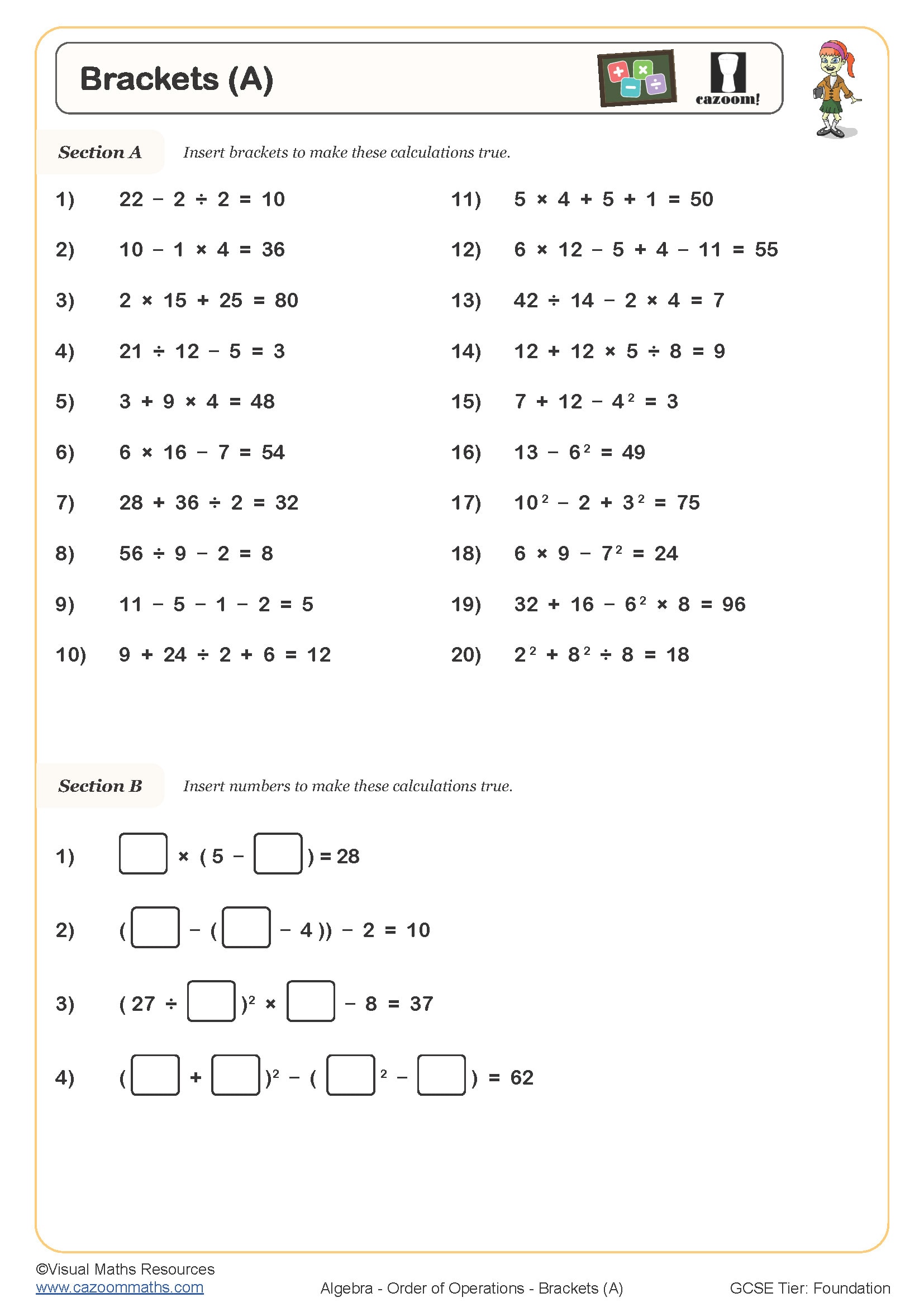
Brackets (B)
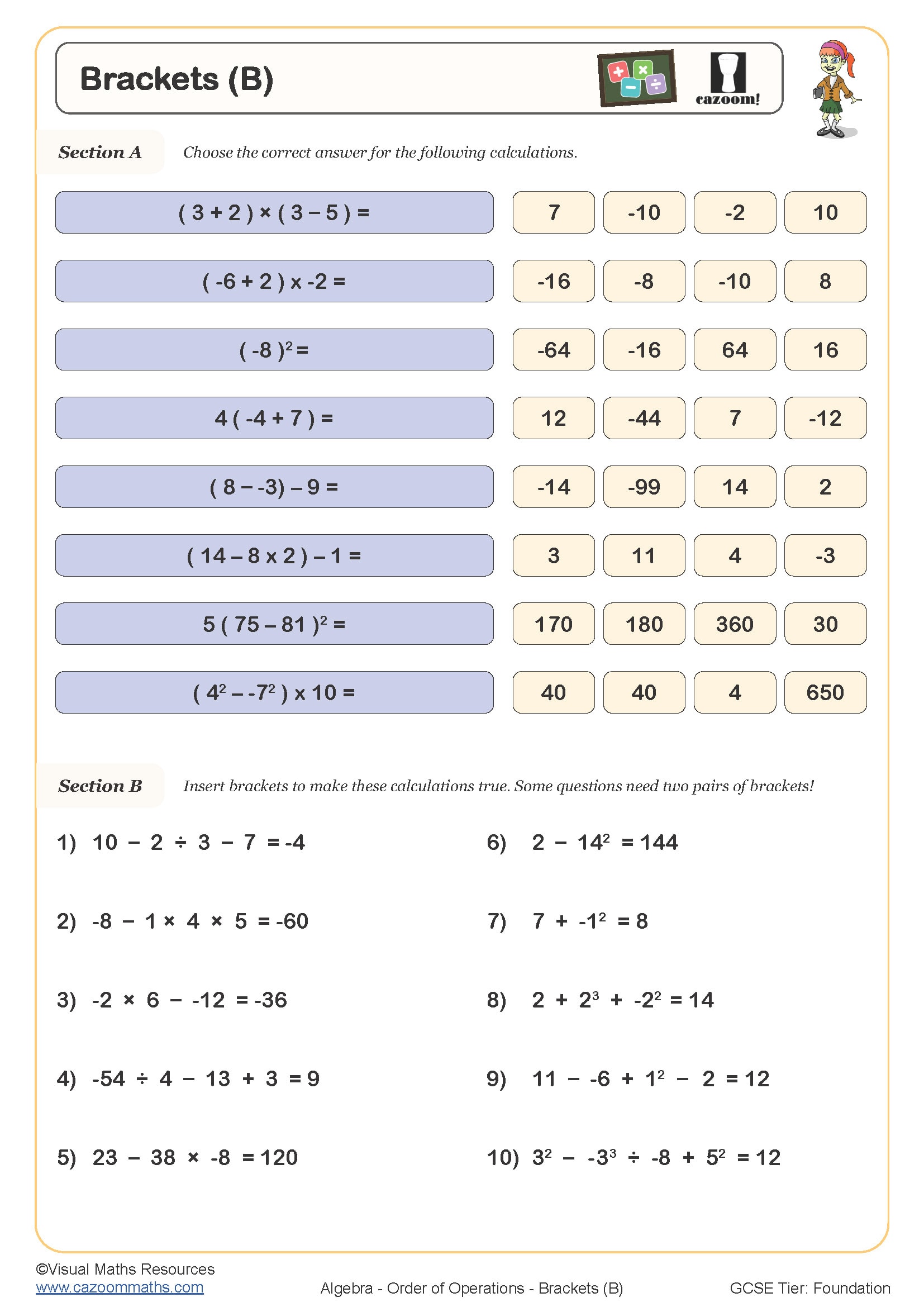
Calculator Predictions
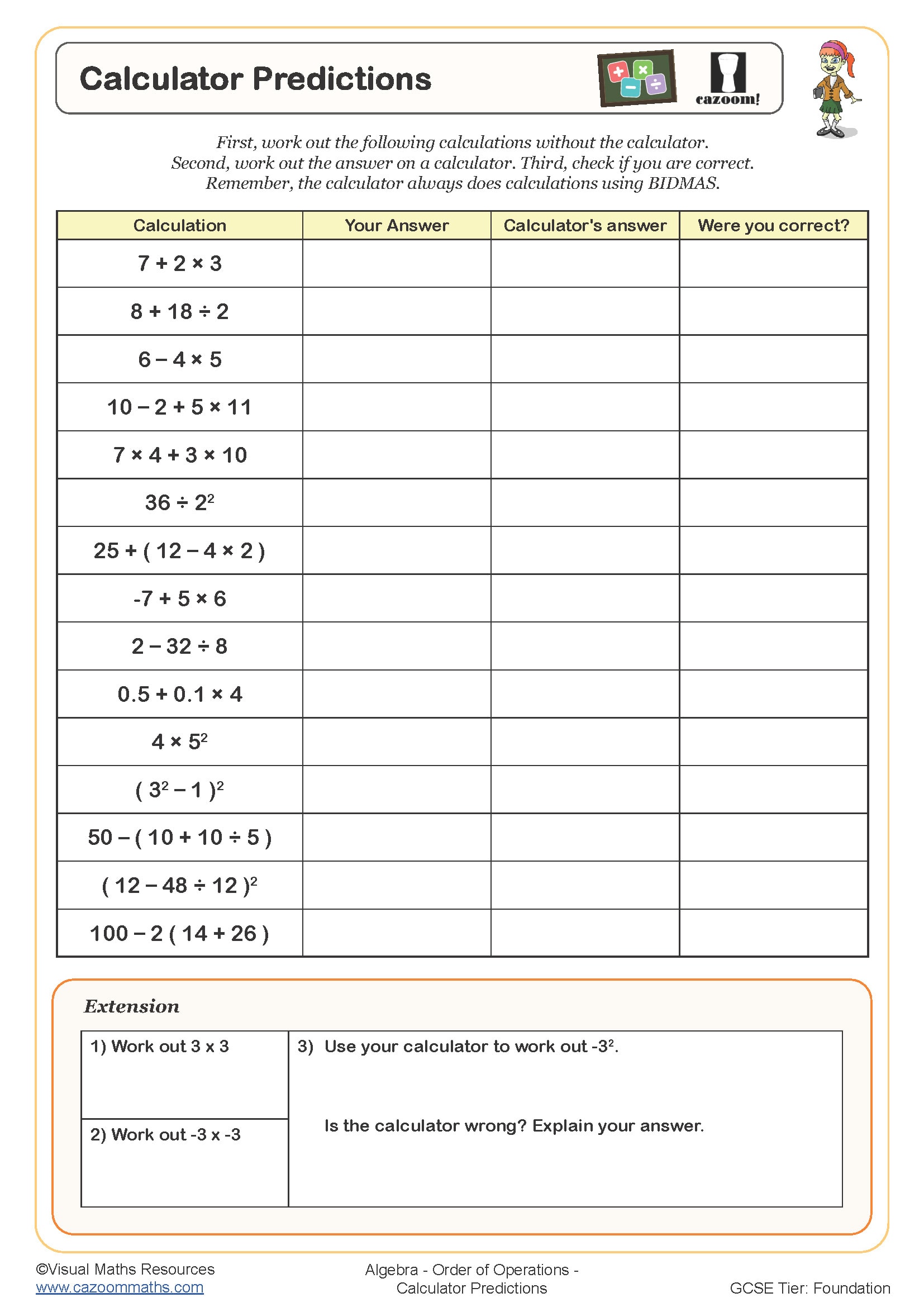
Order of Operations - Calculating with Indices

Order of Operations - Introducing Brackets and Indices
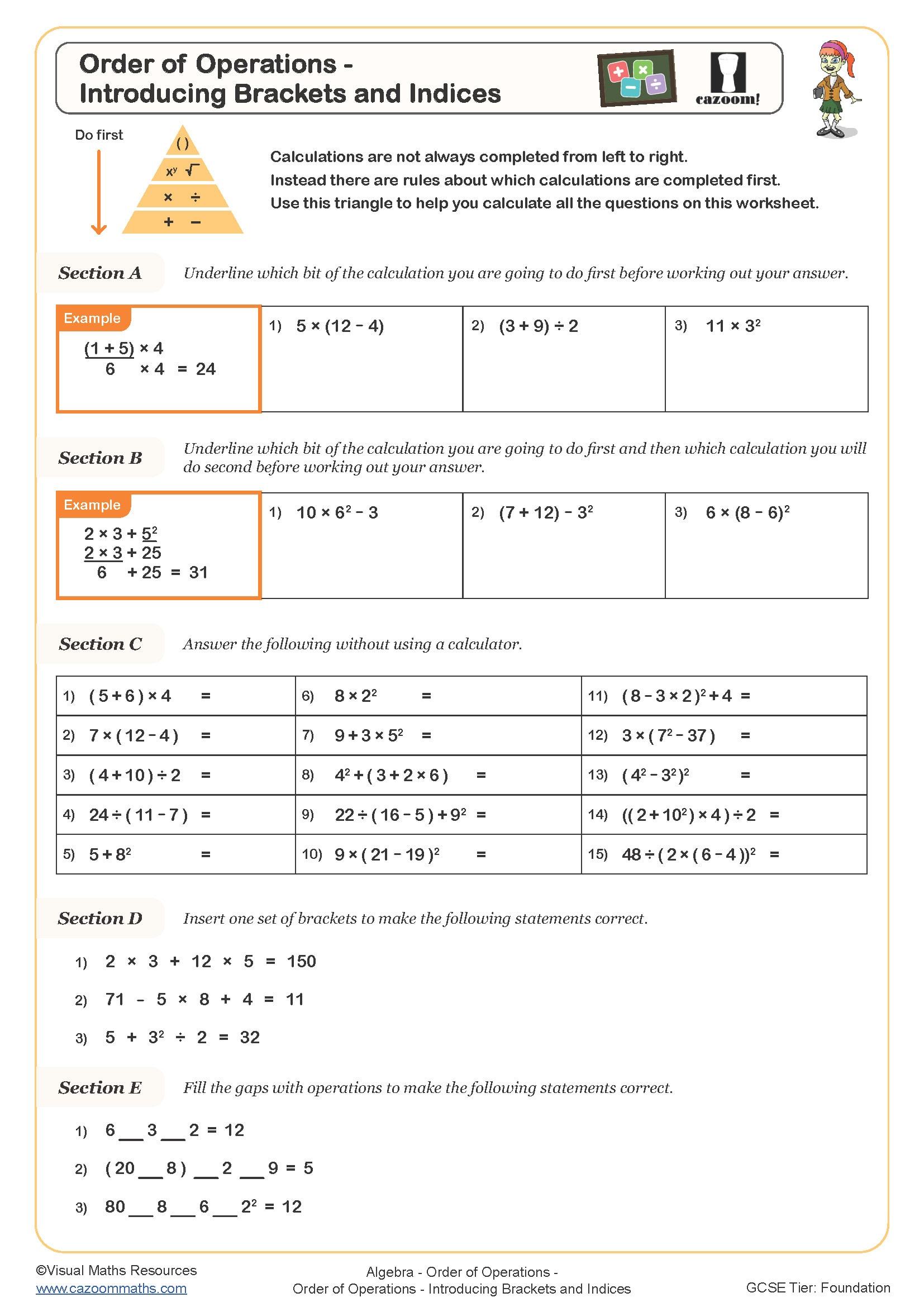
Order of Operations - Multiplication, Division, Addition and Subtraction
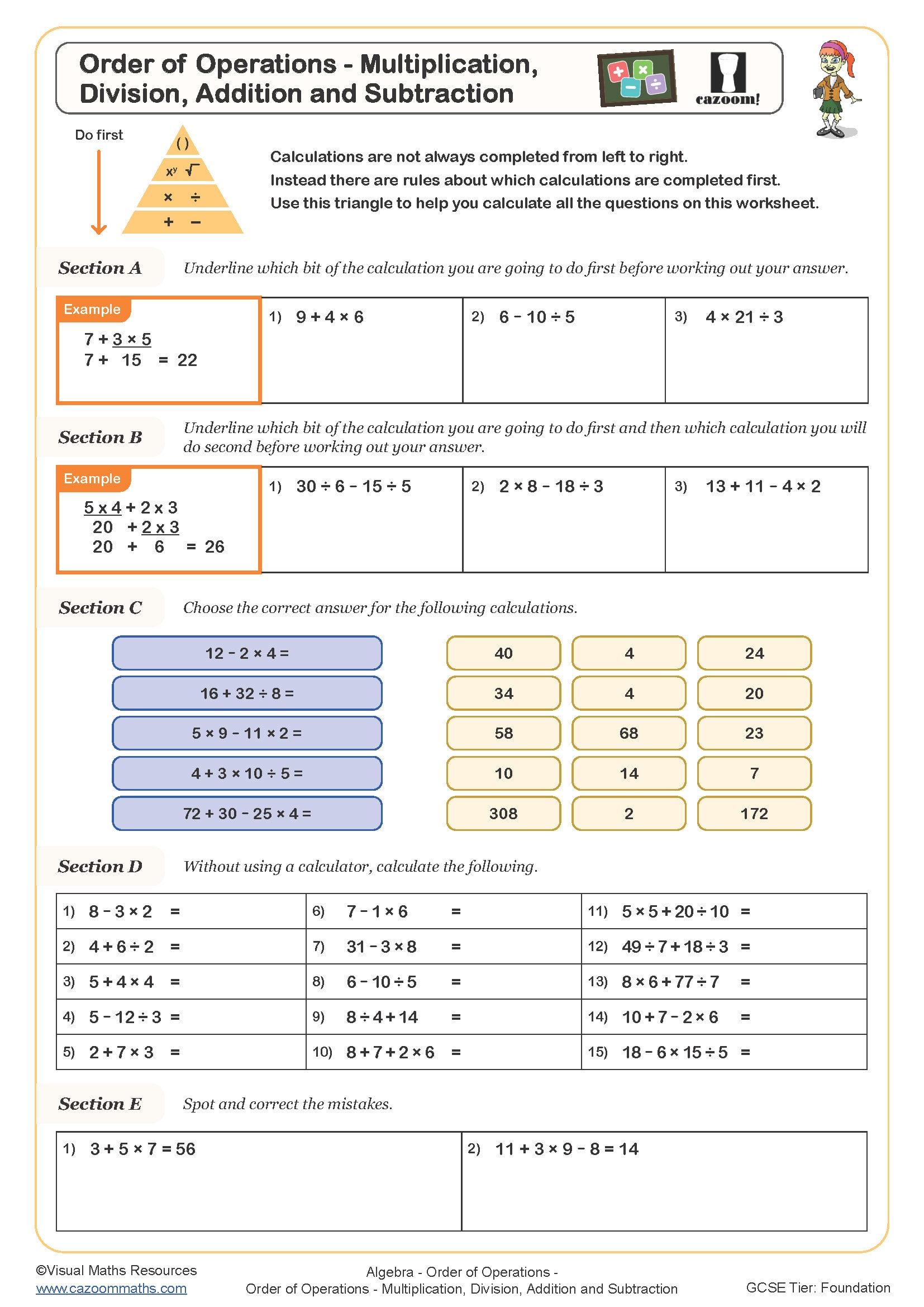
Order of Operations - Understanding Fractions as Division
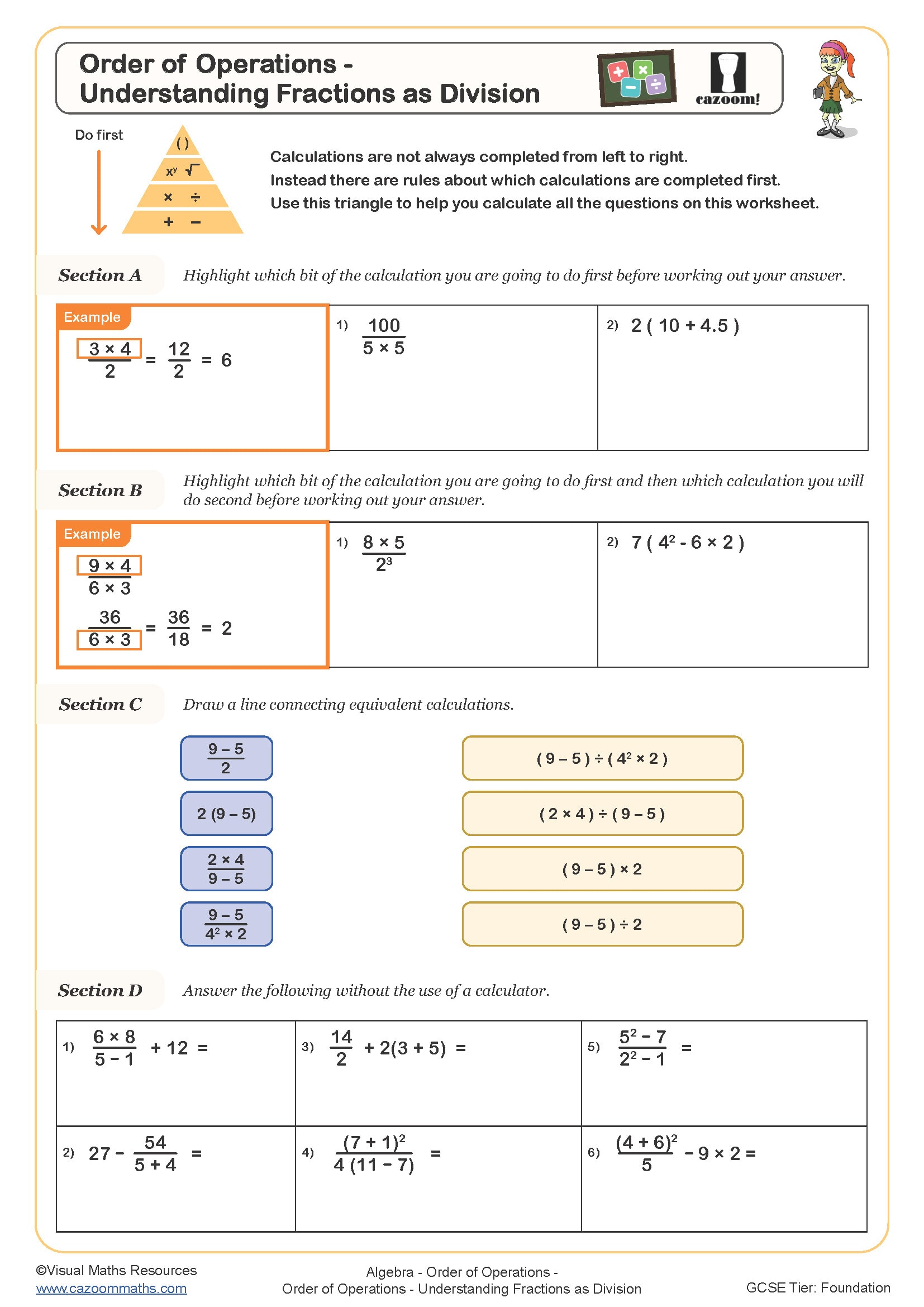
Order of Operations – Expression Trails

7 Reasons Printable Year 8 Order of Operations Worksheets Improve Exam Performance
Mathematical fluency with BODMAS directly correlates with success in KS3 assessments and later GCSE examinations, where multi-step calculations appear across all topics. Learning operation sequencing at an early stage helps students prevent errors that would otherwise accumulate to disrupt their solutions in algebra, geometry and data handling questions. The worksheets help students learn to identify calculation patterns, which enables them to solve problems faster during timed tests and maintain mental resources for problem-solving strategies. Students develop familiarity with different examination formats through practising various question types, which helps them understand how examiners present mathematical concepts in exams. The systematic approach taught through these exercises becomes automatic, allowing pupils to tackle unfamiliar problems methodically rather than guessing. Students develop the mathematical resilience required to handle difficult exam questions when they regularly practice solving problems using ordered operations.
Specific learning benefits include:
• Accelerates calculation speed in tests
• Reduces careless errors significantly
• Strengthens pattern recognition skills
• Develops examination technique naturally
• Creates automatic checking habits
• Improves mark scheme alignment
• Builds time management strategies
What Skills Do Year KS3 Order of Operations Worksheets Really Teach?
The journey from concrete calculations to abstract algebraic thinking follows a carefully planned progression that moves pupils from familiar number operations through pictorial representations to complex expressions. Each worksheet in this comprehensive collection includes worked solutions that demonstrate the thinking process step-by-step, allowing students to understand not just what to calculate but why each step matters. Visual scaffolds gradually fade as competence grows, encouraging independence whilst maintaining support where needed.
The worksheets in this collection include:
• BODMAS Introduction — establishing the fundamental hierarchy of operations
• Two-Operation Calculations — combining multiplication with addition or subtraction
• Three-Operation Expressions — layering multiple operations requiring careful sequencing
• Brackets and Indices — introducing powers and parentheses into calculations
• Fraction Bar Operations — understanding division notation in complex expressions
• Mixed Number Problems — applying rules to decimals and fractions together
• Real-World Application Problems — contextualising abstract rules in practical scenarios
• Challenge Questions — extending thinking with nested brackets and multiple indices
Why Year 8 Order of Operations Worksheets Beat Textbook Exercises
Mathematics departments value these worksheets for their immediate usability and thoughtful differentiation that addresses mixed-ability teaching realities. The resources maintain a controlled learning progression because they avoid the unpredictable shifts in difficulty that traditional textbooks commonly present to students. The clean layout reduces visual distractions that can interfere with students who have processing difficulties, and the clear numbering systems enable teachers to direct whole-class discussions efficiently. The answer sheets present alternative solution methods because they recognise that people think about math differently while confirming that various methods lead to correct solutions. The digital storage system allows for quick adjustments of homework and intervention materials and covers lessons without the need to stand in photocopying lines. The explicit presentation of mathematical notation standards in worked solutions enables students to develop professional presentation skills for their own work, which generic resources typically neglect but examination success requires.
Everyday Maths: Where Year 8 Students Use Order of Operations in Real Life
Mathematical operations appear constantly in everyday situations, though we rarely notice the automatic calculations our brains perform. Understanding BODMAS principles helps pupils recognise these hidden mathematics moments and approach them systematically.
• Calculating total costs with multiple discounts and delivery charges
• Working out cooking times when preparing several dishes simultaneously
• Determining sports statistics involving averages and percentages
• Planning journey times with multiple stops and different speeds
• Computing mobile phone bills with various tariffs and allowances
• Analysing gaming scores with multipliers and penalty deductions
• Budgeting pocket money across different savings goals and expenses
• Understanding energy usage calculations on household bills